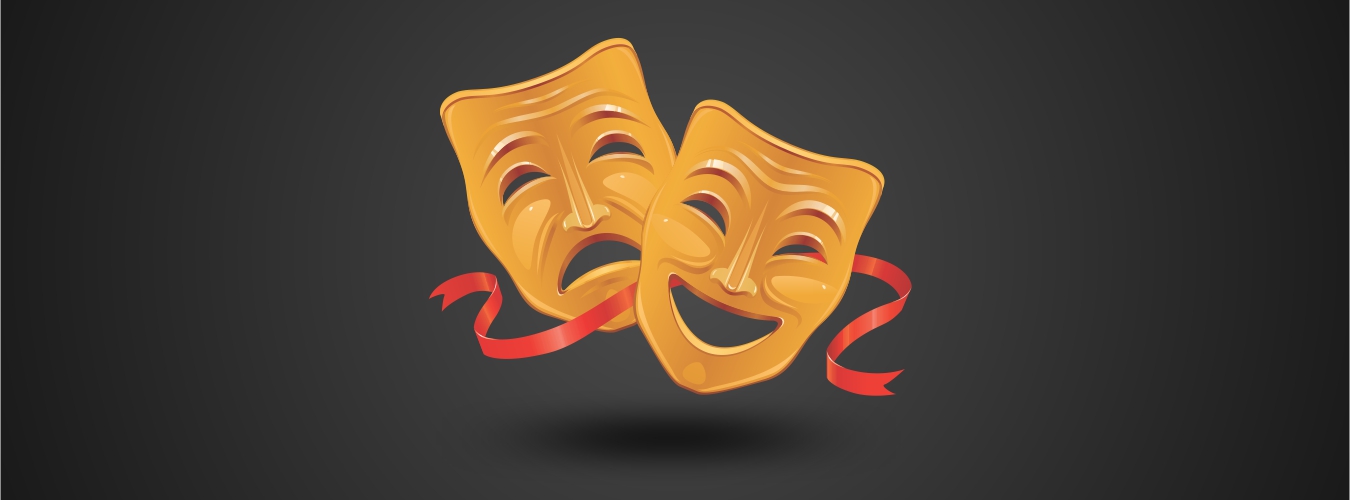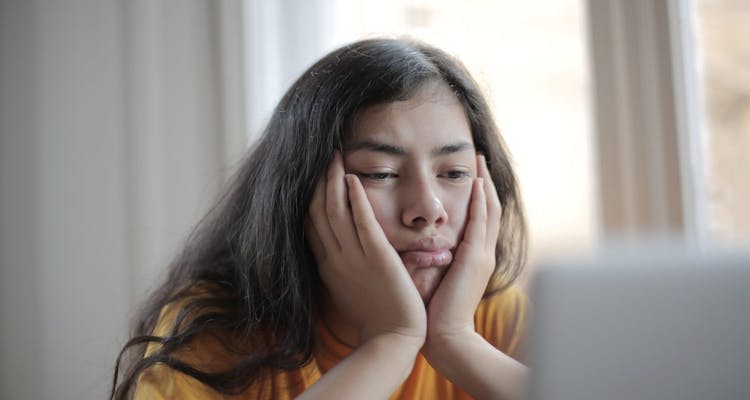90% of women are affected by PMS at some point during their lifetimes.
Whether it’s the cramps, mood swings or anxiety, there’s a lot that a girl goes through PMSing during their puberty.
It is surprising that there is no clear cause on WHY women have PMS – but there are ways to help.
If you wish to learn to better manage Premenstrual syndrome (PMS) and reduce its common symptoms, it is important to understand it first.
So without any further delay, let’s get into the science behind PMS.
Contents
What exactly is PMS or Premenstrual Syndrome?
PMS happens to 90% of all menstruating women with all kinds of symptoms, the emotional ones happening to 85% of those women. And yet researchers don’t necessarily know why PMS occurs. With so many wide-ranging symptoms, it makes it difficult to make a firm diagnosis.
PMS is a combination of symptoms that women get one to two weeks before their period. For women on their periods, they can experience bloating, physical pain, and also the emotional side of PMS such as stress, anxiety, gloominess, and irritability.
For some women, the symptoms can be so severe that they forgo school or work, but for others, it can be milder. And women in their 30’s are more likely to have PMS symptoms, according to a study from 2011.
But there are some theories as to what causes PMS, which we’ll take you through in this article.
Popular Theories on the Causes of PMS
One such cause is that chemical changes in the brain lead to PMS. There are fluctuations of the neurotransmitter serotonin that are thought to play a critical role in mood states during PMS that might contribute to symptoms. According to the Mayo Clinic, “insufficient amounts of serotonin may contribute to premenstrual depression, as well as fatigue, food cravings, and sleep problems”.
Another cause could be the cyclical changes in hormones that occur during the course of your cycle. These fluctuations change and disappear with pregnancy, menopause, and PMS syndrome change during this time, so it’s a common belief that hormone changes affect PMS.
PMS could also be caused by carbohydrate metabolism changes, according to Children’s Hospital. They say that premenstrual syndrome seems to be related to fluctuations in estrogen and progesterone in the body during the cycle.
When does PMS Happen?
PMS happens after ovulation and before the start of the menstrual period. Researchers believe that PMS occurs in the days after ovulation because estrogen and progesterone levels begin to decline. Then, the PMS symptoms withdraw within a few days after a woman’s period starts as hormone levels begin rising again.
The menstrual cycle starting point differs for individual women: it can start as early as 9 or 10, and then the menstrual cycle ends at menopause. But as a girl gets older, PMS tends to get more severe, with the worst PMS symptoms towards the tail end of her menstrual time. In fact, PMS can be the most intense during perimenopause.
How Can You Prevent PMS?
There are now innovative period products to help you fight and conquer your PMS. We’ve come such a long way when it comes to period care, but there are still stigmas around menstruation that come up every day (even with science not fully being able to explain it). At Jubilance, we are working to get to the bottom of PMS.
PMS is already stressful, to begin with. Fortunately, there are a number of things you can do to help you through your PMS, stop it in its tracks, and help you live a fuller life during that week of the month. And, as an added bonus, these tips will help you stay healthier in general!
- Get Exercising! Get in some aerobic activity to help stave off fatigue, keep you energized, and help with concentration, all symptoms that can occur during PMS.
- Make sure you’re sleeping right! Sleep can be your best friend during this time. You want to make sure you’re getting a full eight hours. Lack of sleep can make you feel awful and make PMS symptoms feel even worse – just think about how your anxiety levels spike when you don’t get enough sleep. Maybe try practicing yoga or getting in some meditation time. Also be sure to not have sugar, caffeine, or alcohol right before you go to bed as all of these interrupt your sleeping cycle.
- Try to eat healthy foods. You want to stay away from sugar and salt as much as possible during this time of the month, as they can keep you from sleeping and make you feel bloated and lethargic. You want to eat those “super” foods, with all kinds of vitamins and minerals, so you feel “super” too!
There are some awesome foods you want to keep in mind when you’re pms-ing.
Try a handful of blackberries, they’re perfect for when you want to amp up that Vitamin K – research shows that it helps with cramps during PMS.
Or why not try some blueberries? They have so many antioxidants and they’re believed to help with low estrogen levels, so they can help you sleep better during your period.
Or how about some pineapple chunks? Pineapple seems to be the fruit of the year! I’ve seen printed pineapples on cups, on shirts, on jewelry, but did you know it’s also a super fruit for that time of the month?
The tropical fruit is high in manganese, and that plus its antioxidants help to reduce inflammation and ease those cramps.
Pumpkin Seeds – Pumpkin Seeds have so much magnesium. Magnesium can help reduce cramps during PMS, so maybe we should be eating these like popcorn? PUT CHIA SEEDS ON EVERYTHING.
Chia seeds are not only a good source of fiber (good for your poop) but they’re also packed with omega-3s, which make them anti-inflammatory, so they help you with cramps! Chia seeds for the win!
- Find ways to cope with stress. You can try meditating, there is a great meditation series for PMS just for you from a therapist, find it here! Another idea to find new ways of helping your anxiety is journaling or doing some yoga.
When you journal, you can start to see patterns in how you are feeling, so you can use those patterns to better understand your emotions and figure out how to help yourself. You’ll know exactly when you’ll start to feel a little pms-y and can take that information and run with it.
- Limit your caffeine & alcohol intake. You want to be careful during your PMS time with the amount of caffeine and alcohol you consume. They keep you up at night and don’t allow you to “reset” your internal clock, which you really need during that time of the month.
- Try Jubilance for PMS. It’s the only clinically proven supplement on the market that helps to relieve the emotional sides of PMS including stress, anxiety, irritability, and gloominess. Find more about how this supplement can help you fight off the emotional side of PMS so you can be you every day of the month. It helps 80% of women feel so much better during that time of the month! And, with only two ingredients, Vitamin C & Oxaloacetate (found in the Krebs Cycle), you know exactly what is going in your body.
This supplement is produced by a women-run company and is the ONLY clinically tried supplement on the market for the emotional side of PMS. Just think if you could stop all that stress and those anxieties that accompany PMS? It’s totally possible with a supplement you take once a day. Find out more at www.jubilance.com.
All of these are tools that can help you prevent PMS symptoms. Try what feels right for you and consult with your doctor about your period and menstrual cycle. With PMS affecting almost all menstruating women, there are now ways to better understand your body and make changes so that you can feel better during that time of the month.
References:
- Dickerson, L., Mazyck, P., Hunter, M. (2002). Premenstrual Syndrome. American Family Physician; 67(8): 1743–1752.
- Publishing, Harvard Health. “Premenstrual Syndrome (PMS).” Harvard Health, www.health.harvard.edu/a_to_z/premenstrual-syndrome-pms-a-to-z.
- “Premenstrual Syndrome (PMS).” Mayo Clinic, Mayo Foundation for Medical Education and Research, 7 Feb. 2020, www.mayoclinic.org/diseases-conditions/premenstrual-syndrome/symptoms-causes/syc-20376780.
- “Premenstrual Syndrome (PMS): Symptoms & Causes: Boston Children’s Hospital.” Boston Children’s Hospital, www.childrenshospital.org/conditions-and-treatments/conditions/p/pms/symptoms-and-causes.
- Dennerstein, L., Lehert, P., Heinemann, K. (2011). Global study of women’s experiences of premenstrual symptoms and their effects on daily life. Menopause International; 17: 88–95.
- Steiner, M. (2000). Premenstrual syndrome and premenstrual dysphoric disorder: guidelines for management. Journal of Psychiatry and Neuroscience; 25(5): 459–468.
- Aganoff, J. A., Boyle, G. J. (1994). Aerobic exercise, mood states, and menstrual cycle symptoms. Journal of Psychosomatic Research; 38: 183–92.
- American College of Obstetricians and Gynecologists. (2015). Premenstrual Syndrome (PMS)
- Tully, Lissa, et al. “Oxaloacetate Reduces Emotional Symptoms in Premenstrual Syndrome (PMS): Results of a Placebo-Controlled, Cross-over Clinical Trial.” Obstetrics & Gynecology Science, vol. 63, no. 2, Mar. 2020, pp. 195–204.






Comments are off this post!